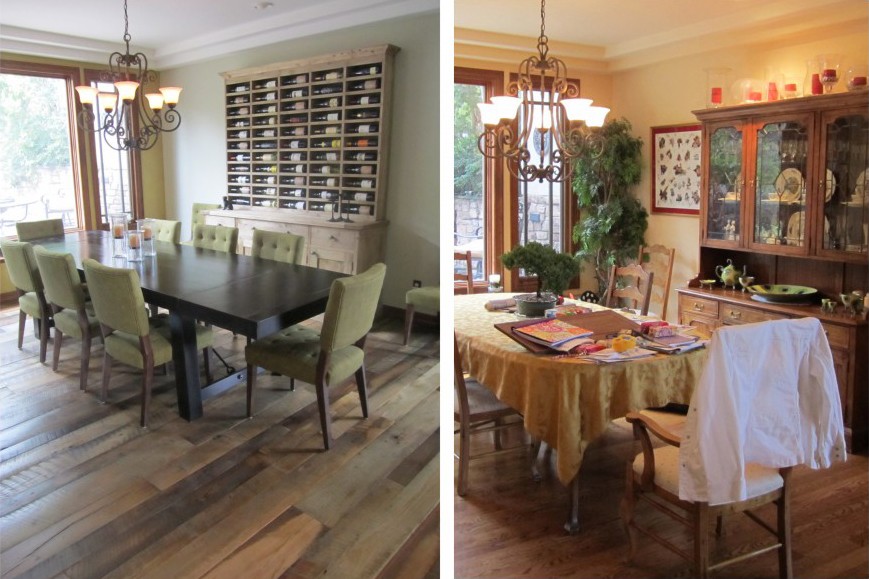Sometimes you find yourself in a situation where you want to use more than one type of hardwood in your home. For example, if the living room is already layered with a great hardwood floor but you dislike the floor in the entrance hallway or the dining area, it is logical to decide that a couple (or more) wood floors will be involved in re-creating your house flooring.
The Mix-Match Dilemma: To Mix or To Match
Having the same floor throughout the whole home seems to be widely accepted as a rule for creating a sense of unified and broader space, but if your rooms are separated or on a different floor level inside, you are free to skip this rule.
Even if your entire home is on the same level, depending on the position and connection of the rooms, you may still play with various wood types.
So, now you may be faced with a dilemma: should you match it with an equivalent or throw something new and different into the mix?

Transition vs. Split
Adjoining two types of wood floors is nothing complicated in separated areas or rooms. Simply use a T-molding at the threshold of the doors – it is a neat and easy solution. If you prefer only wooden materials, then use a straight wooden border between the two.
You may be tempted to try to incorporate a new floor that would completely match the existing adjoining hardwood floor. That could be a double-edged sword because you may end up with floors that are similar but mismatching in their shade or tone. Wood is a natural material, and though it is processed, one series of the same type may not be exactly like the other. The eye spots those near-misses more as a mismatch than it does when they are completely different.

It is better to create deliberate contrast with two types of wood than to try to match same or similar types of wood floor placed next to each other. Even if your style is not on the eclectic side, the transition from one floor to another doesn’t have to look like an odd split. You may get creative and create a border in one room with the wood type that is dominant in the next room and vice versa.
If you are still reluctant to use different types of wood flooring and want to spread a unified look, then consider staining all the wood floor (the old and the new) for a more even result. We offer high-quality services for existing flooring, too!

